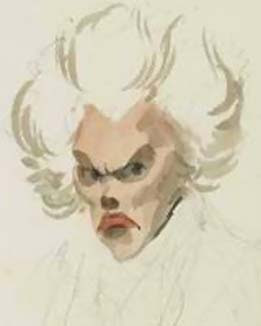
Adrien-Marie Legendre did not like to talk about his personal life. His colleague Simeon Poisson wrote:
Our colleague has often expressed the desire that, in speaking of him, it would only be the matter of his works, which are, in fact, his entire life. (From MacTutor Biography)He was born September 15, 1752 in France. He may have been born in Toulouse but from a very early time, his family lived in Paris. His family was wealthy and he attended the College Mazarin in Paris. His area of focus was mathematics and physics.
In 1775, he became a lecturer at the Ecole Militaire based on the recommendation of the well known mathematician Jean D'Alembert. One of his fellow lecturers at the Ecole Militaire was Pierre-Simon Laplace who would later become very well known himself.
Legendre's reputation was made when he was able to win the Berlin Academy Prize in 1782. The Berlin Academy had proposed a very difficult problem that involved calculating the projectory path of a cannon ball undergoing air resistance. He later wrote an influential paper on the force of attraction between two confocal ellipsoids. In January of 1783, he was appointed as an associate to the French Academy of Sciences.
Legendre proceeded to do influential investigations of celestrial mechanics, number theory, and elliptic functions. In number theory, his work includes an important result on the quadratic reciprocity of residues and arithmetic progressions of prime numbers. Both of these results were later superceded by Carl Friedrich Gauss's work on quadratic reciprocity of residues and Johann Dirichlet's work on arithmetic progressions of primes. In 1787, he was elected to the Royal Society of London.
After the French Revolution of 1793, Legendre lost most of his fortune. In 1794, he published his Elements of Geometry which became the leading elementary text on geometry at the time. In this work, he attempted to make the proofs behind Euclid's Elements clearer and better organized.
In 1801, Gauss criticized Legendre's results on quadratic reciprocity and claimed that he himself had invented the correct method. It is clear that Legendre was not happy with Gauss's words but in 1808, when Legendre came out with the next version of his textbook on number theory, he included Gauss's proof instead of his own.
In 1824, Legendre refused to support the government's candidate for the National Institute. As a result of his refusal, he lost his pension and lived his remaining years close to poverty.
In 1830, he offered his proof for Fermat's Last Theorem n = 5 which was based on the work done by Dirichlet and also the proof by Sophie Germain.
Legendre was fascinated by Euclid's parallel postulate and for many years attempted to provide a proof. He refused to believe in the existence of non-Euclidean geometries which were first proposed by Nikolai Ivanovich Lobechevsky in 1829.
Legendre died on January 10, 1833. He had made significant achievements in geometry, differential equations, calculus, function theory, number theory, and statistics.
References
- Biography of Legendre, MacTutor
- Legendre, Wikipedia
The portait above is incorrect as it depicts a french politician Louis Legendre. The portrait was made after Adrien was alive.
ReplyDeleteHi JP,
ReplyDeleteIt looks like many people made this same mistake. :-)
For those who have not yet heard the details, here's an AMS notice about this issue.
I've updated the picture.
Cheers,
-Larry